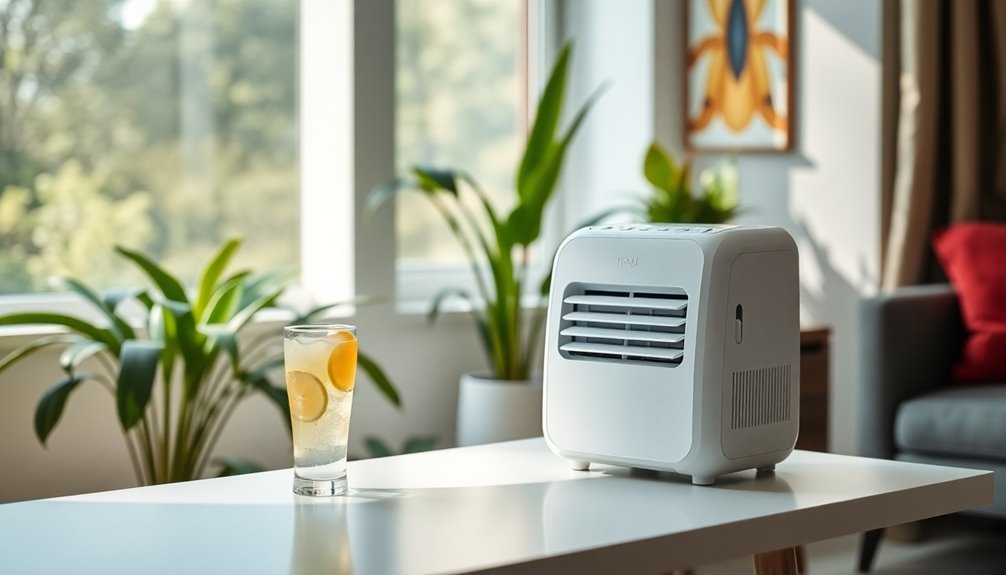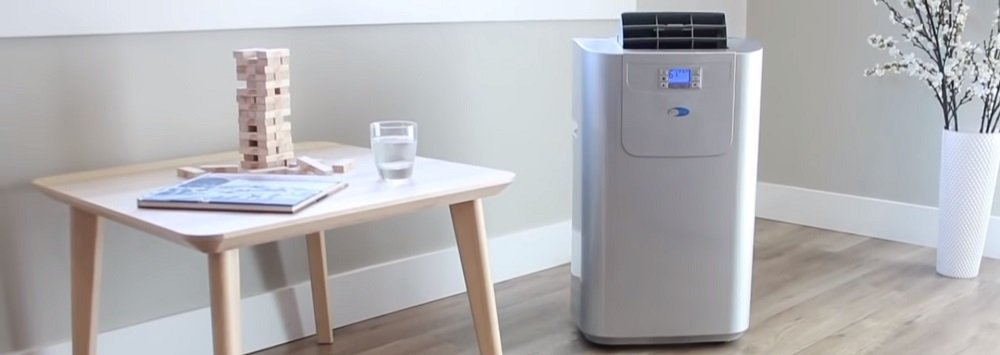Portable Room Heater And Air Conditioner

Portable Room Heater And Air Conditioner: A Comprehensive Buying Guide
In the realm of home climate control, flexibility and convenience are highly valued. The portable room heater and air conditioner offers just that, serving as a versatile solution for maintaining comfortable temperatures in specific areas of your home without the need for extensive ductwork or central HVAC system adjustments. This guide provides a detailed overview of these units, covering their pros, cons, key features, pricing considerations, and maintenance requirements, ultimately helping you make an informed purchase decision.
Understanding the Basics
A portable room heater and air conditioner, also known as a portable AC with heat, is a self-contained unit designed to both cool and heat a single room or area. Unlike central HVAC systems which condition the entire home, these units provide localized climate control. They typically utilize a refrigerant-based system for cooling and an electric resistance coil or heat pump technology for heating. Exhaust hoses are used to vent hot air outside during cooling, and condensation management is a crucial aspect of their operation.
Pros and Cons of Portable Room Heater and Air Conditioners
Advantages:
- Portability: The most significant advantage. Easily moved from room to room as needed. Ideal for spaces not served by central HVAC.
- Spot Cooling and Heating: Efficiently conditions only the occupied area, reducing energy waste compared to whole-house systems.
- Easy Installation: Requires minimal setup. Typically only involves venting the exhaust hose through a window.
- Cost-Effective Solution: Lower upfront cost compared to installing or repairing central air conditioning or heating.
- Supplemental Climate Control: Can supplement existing HVAC systems, reducing strain during peak heating or cooling seasons.
- Dehumidification: Many models offer dehumidifying functions, helping to control moisture levels.
Disadvantages:
- Noise: Generally noisier than central air conditioning systems due to the compressor being located within the room.
- Exhaust Hose Required: The exhaust hose needs to be properly vented to the outside, which can sometimes be inconvenient. Poor venting reduces efficiency.
- Space Requirement: Takes up floor space within the room.
- Limited Cooling and Heating Capacity: Less powerful than central HVAC systems, suitable for smaller spaces.
- Manual Drainage: Some models require manual drainage of condensed water, although many now feature auto-evaporation systems.
- Aesthetics: May not be as visually appealing as more integrated HVAC solutions.
Key Features to Consider
When selecting a portable room heater and air conditioner, consider these important features:
Cooling and Heating Capacity (BTU)
BTU (British Thermal Units) is a measure of the cooling and heating capacity of the unit. The higher the BTU rating, the larger the area the unit can effectively cool or heat. Consider the size of the room you intend to use the unit in. A general guideline is:
- 100-300 sq ft: 8,000-10,000 BTU
- 300-500 sq ft: 10,000-14,000 BTU
- 500-700 sq ft: 14,000-18,000 BTU
It's always better to slightly overestimate the BTU requirement than underestimate it.
Energy Efficiency (EER and COP)
EER (Energy Efficiency Ratio) measures the cooling efficiency of the unit. A higher EER indicates greater energy efficiency. Look for models with an EER of 10 or higher. For heating efficiency, consider the COP (Coefficient of Performance), particularly for heat pump models. A higher COP signifies better heating performance.
Type of Heating
Portable ACs with heat functionality typically employ one of two heating methods:
- Electric Resistance Heating: Similar to a space heater, using electric coils to generate heat. Less energy-efficient than heat pumps.
- Heat Pump: More energy-efficient than electric resistance heating. Extracts heat from the outside air (even in cold temperatures) and transfers it indoors. Less effective in very cold climates.
Noise Level
Noise level is a crucial factor, especially for bedrooms or home offices. Look for models with a low decibel (dB) rating. Consider models advertising “quiet operation.”
Auto-Evaporation System
An auto-evaporation system reduces or eliminates the need to manually drain condensed water. The unit evaporates the collected water and vents it out through the exhaust hose. This is a highly desirable feature.
Programmable Timer
A programmable timer allows you to set the unit to turn on or off at specific times, improving energy efficiency and convenience.
Remote Control
A remote control provides convenient operation from across the room.
Air Filtration
Look for models with washable or replaceable air filters to improve air quality by removing dust and allergens.
Multiple Fan Speeds
Multiple fan speeds allow you to customize the airflow and noise level.
Digital Display and Controls
A clear digital display and intuitive controls make the unit easy to operate.
Popular Brands and Models
Several brands offer portable room heater and air conditioners, each with varying features and price points. Here are a few popular options:
- Whynter: Known for their powerful and feature-rich models, often with dual-hose systems for increased cooling efficiency.
- Honeywell: Offers a range of models with a focus on user-friendliness and quiet operation.
- Black+Decker: Provides budget-friendly options that are suitable for smaller spaces.
- LG: Known for innovative features and stylish designs, often incorporating smart home integration.
- SereneLife: Offers affordable options with decent performance for the price.
Model Examples:
Keep in mind that specific models vary, so always check the latest specifications and reviews before making a purchase. Research and compare detailed specification sheets of individual models to compare the features and ratings.
Pricing Considerations
The price of a portable room heater and air conditioner can range from $200 to $800 or more, depending on the BTU rating, features, and brand. Generally, the larger the cooling capacity and the more features included, the higher the price. Consider your budget and prioritize the features that are most important to you.
Installation and Maintenance
Installation:
- Venting: The most crucial aspect of installation is proper venting of the exhaust hose. The hose should be securely attached to the unit and vented outside through a window or wall opening. Ensure the window kit or wall adapter is properly sealed to prevent hot air from re-entering the room.
- Placement: Position the unit on a level surface and away from obstructions that could block airflow.
- Power: Plug the unit into a dedicated electrical outlet with the appropriate voltage and amperage rating.
Maintenance:
- Filter Cleaning: Clean or replace the air filter regularly (typically every 2-4 weeks) to maintain optimal performance and air quality.
- Condensate Drainage: If your unit does not have an auto-evaporation system, regularly drain the condensate water according to the manufacturer's instructions.
- Exterior Cleaning: Wipe down the exterior of the unit with a damp cloth to remove dust and debris.
- Storage: When not in use, store the unit in a cool, dry place, preferably covered to protect it from dust.
Warranties
Most portable room heater and air conditioners come with a limited warranty, typically covering parts and labor for one year. Some manufacturers may offer extended warranties for an additional cost. Review the warranty terms carefully before making a purchase.
Making the Right Choice
Choosing the right portable room heater and air conditioner depends on your specific needs and priorities. Consider the size of the room you want to cool or heat, your budget, your desired features, and the noise level. Read reviews and compare models before making a purchase.
By understanding the pros and cons, key features, pricing, and maintenance requirements of these units, you can confidently select a portable room heater and air conditioner that will provide you with comfortable and convenient climate control for years to come.
Remember to check the specific features, warranties, and energy efficiency ratings of each model before making your final decision. Consider consulting with an HVAC professional for personalized recommendations based on your specific needs and circumstances.










